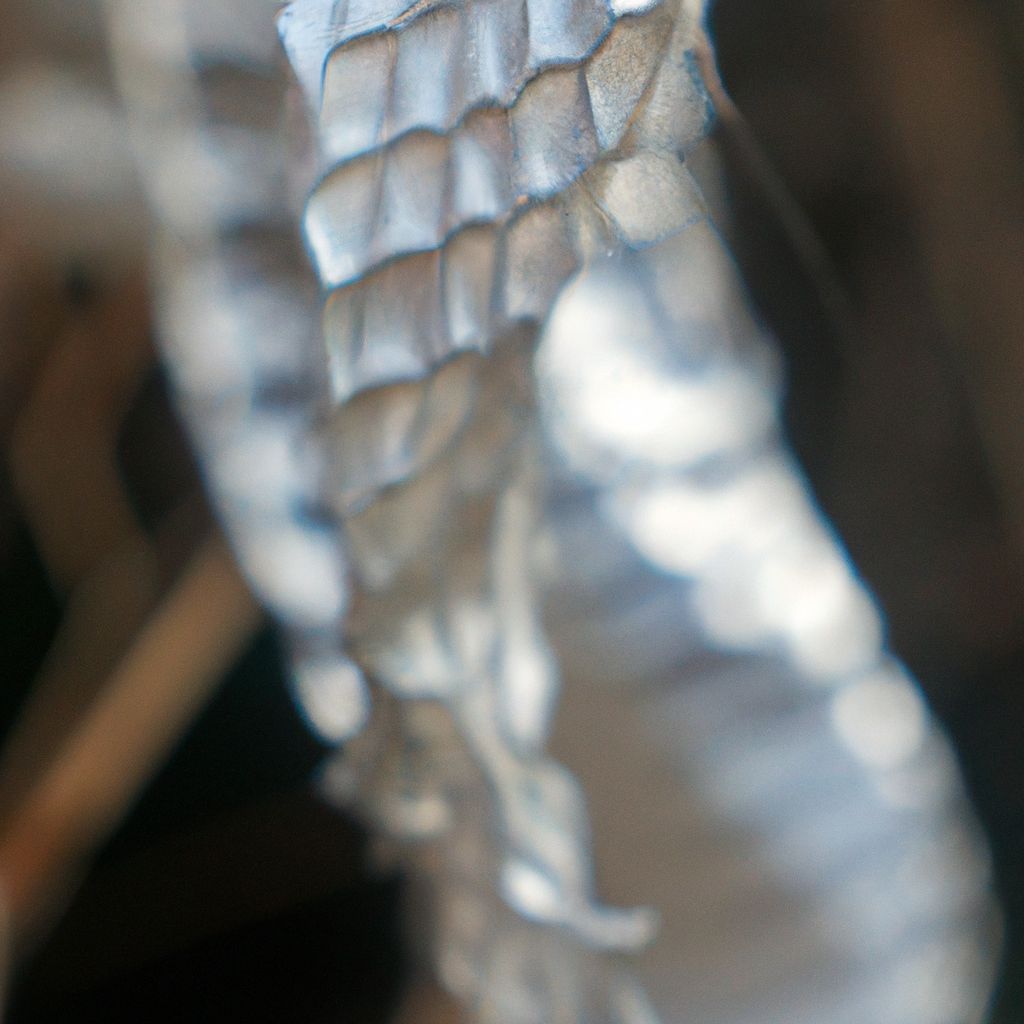“Shedding Light on How Often Snakes Shed Their Skin”
Introduction to Snake Shedding:
Snakes are intriguing creatures known for their unique ability to shed their skin. This natural process, called snake shedding or molting, plays a crucial role in their growth and survival. Understanding the frequency and stages of snake shedding can provide valuable insights into the fascinating world of these reptiles.
What is Snake Shedding?
Snake shedding refers to the periodic shedding of a snake’s skin. Unlike humans and many other animals, snakes do not undergo continuous growth. Therefore, shedding their skin allows snakes to accommodate their growing bodies and replace old, damaged skin.
What is the Purpose of Snake Shedding?
The primary purpose of snake shedding is to enable growth and facilitate survival. As snakes grow, their outer skin layer becomes tight, hindering their movement and causing discomfort. Shedding the old skin helps snakes shed parasites, microorganisms, and any injuries they may have incurred.
Stages of Snake Shedding:
Snake shedding consists of several stages that snakes go through periodically. The main stage in this process is called ecdysis, which involves the shedding of the entire skin.
Ecdysis: The Process of Snake Shedding:
Ecdysis is an intricate process that begins with the development of a new layer of skin beneath the old one. As the new skin forms, special cells in the snake’s body produce a fluid to separate the old skin from the new. Eventually, the old skin loosens and peels off, revealing a fresh, vibrant layer underneath.
How Often Do Snakes Shed Their Skin?
The frequency of snake shedding varies depending on various factors. Generally, snakes shed their skin every 4 to 8 weeks during their growth phase. However, this can vary based on the snake’s age, species, size, health condition, environment, and nutritional factors.
Factors Affecting the Frequency of Snake Shedding:
Several factors can influence the frequency of snake shedding. Younger snakes shed more frequently than older snakes as they experience rapid growth. environmental factors such as temperature, humidity, and photoperiod can influence shedding frequency. Nutritional factors, including a snake’s diet and overall health, also play a role.
Understanding the signs of impending snake shedding, the shedding process itself, as well as the challenges and dangers associated with shedding, can help snake owners provide appropriate care during this sensitive time. By ensuring a suitable environment and monitoring the snake’s behavior and appearance, owners can support a healthy and successful shedding process.
Key takeaway:
- Snake shedding is a natural process: Snakes shed their skin regularly as part of their growth and development, allowing for new skin to replace old and worn-out skin.
- Shedding benefits snakes in various ways: Shedding promotes healthier skin, removes parasites, and allows for growth. It also helps with camouflage and aids in healing wounds.
- The frequency of shedding depends on several factors: Factors such as the snake’s age, species, size, health, and environmental conditions influence how often snakes shed their skin.
What is Snake Shedding?
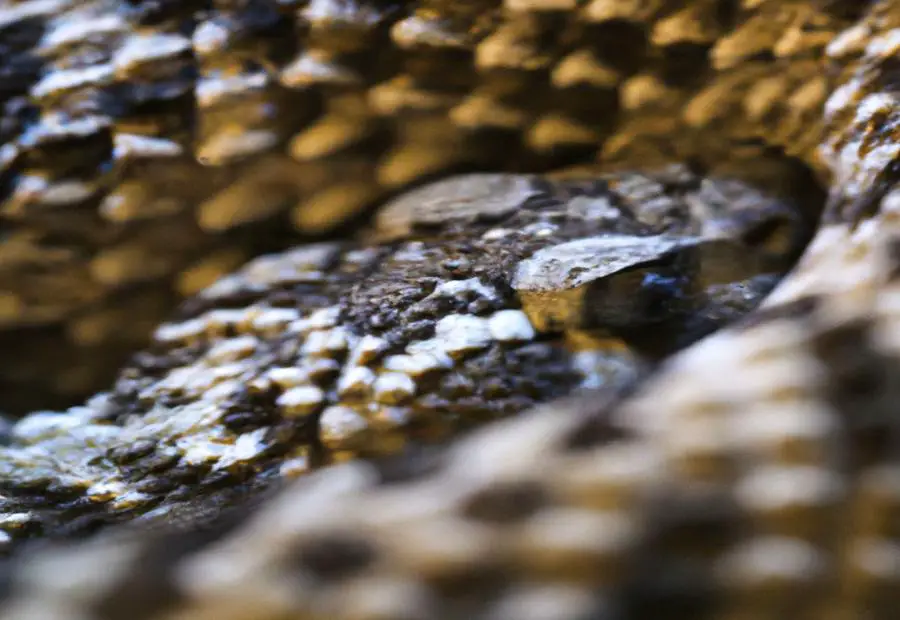
Photo Credits: Ruggedreptiles.Com by Ronald Allen
Snake shedding, also known as ecdysis, is the natural process by which a snake sheds its old skin to promote new growth. It is an essential part of a snake’s life cycle. As snakes grow, their skin becomes tight and restrictive. Shedding enables them to eliminate their old skin and expose a fresh, more flexible layer underneath.
The snake’s body produces a special substance that helps loosen the old skin, making it easier to remove. Shedding typically initiates with the snake’s cloudy eyes and advances to the rest of its body. Once the shedding is complete, the snake acquires a vibrant and glossy appearance.
The frequency of shedding can vary depending on factors such as the snake’s age, species, and environment. Juvenile snakes tend to shed more frequently than adults, often shedding every few weeks, whereas adults may shed every few months. Snakes may shed more frequently when they are experiencing growth, injury, or preparing for reproduction.
It is important to note that snakes also shed their transparent eyecaps as a means of protecting their eyes during the shedding process.
What is the Purpose of Snake Shedding?
Snake shedding, or ecdysis, serves a vital purpose in the life of a snake. It enables growth and regeneration, allowing snakes to accommodate their expanding bodies and remove parasites or damaged skin. Shedding also aids in the healing of wounds and skin injuries.
Moreover, shedding promotes optimal health and functionality in snakes. By eliminating toxins and bacteria, shedding enhances their overall well-being and boosts their immune system. Furthermore, shedding gives snakes a fresh and vibrant appearance, which increases their ability to attract mates and repel predators.
It is important to note that the purpose of shedding can vary slightly among different snake species. Some species shed to aid digestion, while others shed to enhance their camouflage abilities.
Understanding the purpose of snake shedding is crucial for snake owners and enthusiasts. By providing the appropriate environmental conditions and nutrition, individuals can support the natural shedding process and maintain their snakes’ health.
Pro-tip: Regularly check your snake’s enclosure for signs of shedding, such as dull skin or cloudy eyes. Creating a humid hiding spot and misting gently can help facilitate the shedding process.
Stages of Snake Shedding
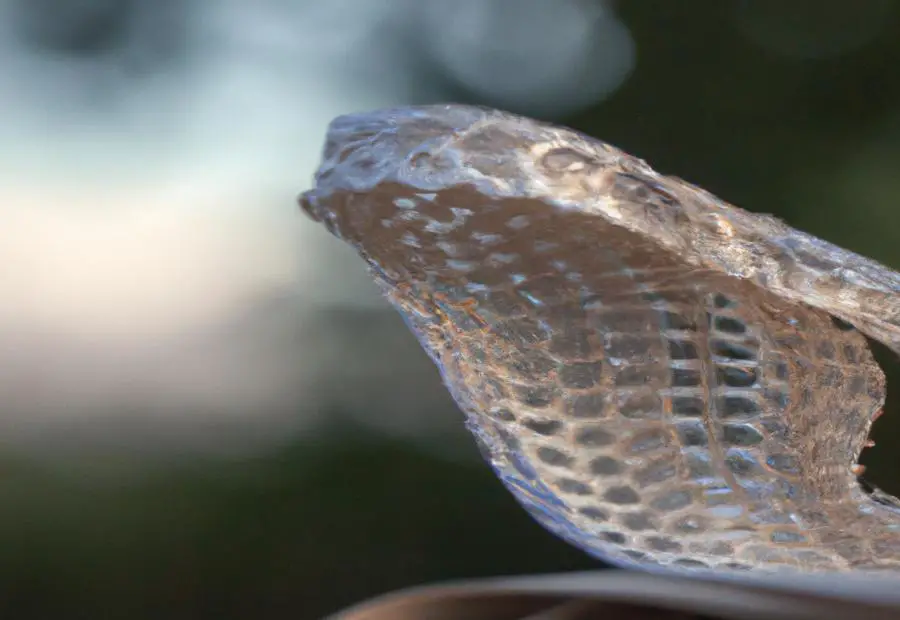
Photo Credits: Ruggedreptiles.Com by Eugene Miller
As snakes grow, they undergo a fascinating transformation known as shedding their skin. In this section, we’ll delve into the various stages of snake shedding, exploring the mesmerizing process of ecdysis. Get ready to dive into the intricate world of snake biology and discover the natural wonder of skin shedding in these remarkable creatures. Brace yourself for an enlightening journey through the stages of this captivating metamorphosis.
Ecdysis: The Process of Snake Shedding
Ecdysis, also known as snake shedding, plays a vital role in a snake’s life cycle. Understanding the process of Ecdysis is crucial for snake owners to ensure the well-being of their pet snakes. Here are the steps involved in this natural process:
1. Preparation: Prior to shedding, snakes go through a phase called pre-ecdysis. During this stage, their skin becomes dull and their eyes turn cloudy or bluish, indicating that shedding is about to commence.
2. Loosening: The snake’s body secretes a specialized fluid that facilitates the separation of the new skin from the old one. This secretion allows the old skin to detach easily.
3. Shedding: To aid in the removal of the old skin, the snake rubs against rough surfaces such as rocks or branches. This rubbing motion initiates the shedding process starting from the head and progressing towards the tail.
4. Removal: As the snake sheds its skin, it wiggles and slides through the old skin, leaving it behind in a tube-like shape.
5. Recovery: After shedding, the snake’s new skin is delicate and vulnerable. It takes time for the new skin to harden and regain strength, making the snake more susceptible to injuries.
During the shedding process, snake owners should consider the following suggestions:
– Provide a moist environment: Maintaining high humidity levels makes shedding easier for the snake. Ensure that the enclosure has sufficient moisture.
– Offer a rough surface: Placing rocks or branches inside the enclosure assists with shedding. These rough surfaces help the snake loosen and remove the old skin.
– Avoid disturbing the snake: Handling or disturbing the snake while it is shedding can cause stress and damage to the new skin.
By providing the appropriate conditions and allowing the snake to shed naturally, you can support a healthy shedding process. Remember, shedding is a normal and important part of a snake’s life cycle.
How Often Do Snakes Shed Their Skin?
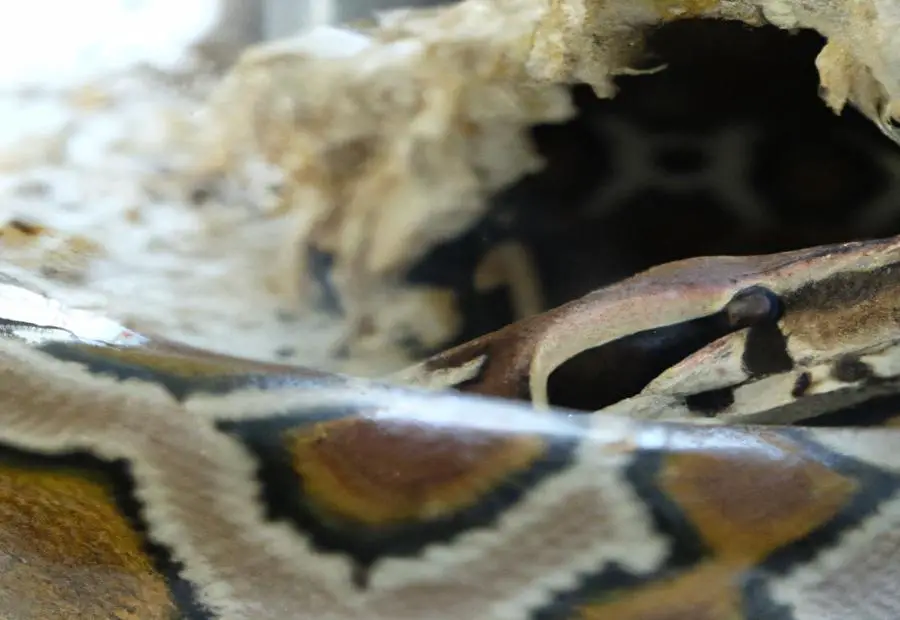
Photo Credits: Ruggedreptiles.Com by Bryan Campbell
Curious about snake shedding? Let’s dive into the fascinating world of how often snakes shed their skin. Explore the factors that influence the frequency of snake shedding and uncover the secrets behind this natural phenomenon. Get ready to uncover some interesting facts and insights about these slithery creatures and their unique way of renewal.
Factors Affecting the Frequency of Snake Shedding
The frequency of snake shedding is influenced by several factors. These factors include the age of the snake, the species of the snake, the environmental conditions in the snake’s habitat, the diet and growth rate of the snake, and the health and stress levels of the snake. Understandably, each of these factors can affect the frequency at which a snake sheds its skin.
Firstly, age plays a significant role in the shedding process. Young snakes tend to shed more frequently than adult snakes. Juvenile snakes may shed every few weeks or months, while adult snakes may shed every few months to a year. Therefore, the age of the snake is an important consideration when determining how often a snake will shed.
Secondly, the species of the snake also plays a part in the shedding frequency. Different snake species have different shedding patterns. For example, boa constrictors shed less frequently compared to other species like corn snakes, which shed more often. So, the species of the snake must be taken into account when anticipating the shedding frequency.
Furthermore, the environmental conditions in a snake’s habitat can have an impact on shedding frequency. Factors such as temperature, humidity, and lighting can all affect how often a snake sheds. Snakes in warmer and more humid environments tend to shed more frequently than snakes in cooler and drier conditions. Thus, it is essential to ensure appropriate environmental conditions for a snake to facilitate a healthy shedding process.
The diet and growth rate of a snake also influence shedding frequency. Snakes that are growing rapidly or have a higher metabolic rate shed more frequently. Their increased energy needs result in more frequent shedding. Therefore, the snake’s diet and growth rate should be considered when determining how often it will shed.
Lastly, the health and stress levels of a snake can impact its shedding frequency as well. Sick or stressed snakes shed more frequently as their bodies try to repair or cope with issues. Conversely, healthy and content snakes shed less often. So, it is crucial to monitor the snake’s overall health and minimize stress to ensure a normal shedding process.
By understanding and considering these various factors, snake owners can better anticipate and manage their pets’ shedding needs. Providing appropriate environmental conditions, monitoring the snake’s health, and ensuring a suitable diet and growth rate are all essential for a healthy shedding process.
Signs of Impending Snake Shedding
As snakes grow, they undergo a fascinating process called shedding their skin. In this section, we’ll dive into the signs that indicate when a snake is about to shed. We’ll explore the changes in their appearance and behavior that serve as clues for this impending process. Get ready to uncover the secrets behind this mesmerizing natural phenomenon!
Changes in Appearance and Behavior
Changes in appearance and behavior are key indicators that a snake is ready to shed its skin. When looking out for these signs, there are several key observations to consider. Firstly, the snake’s eyes may become cloudy or opaque, which is caused by fluid build-up between the old and new skin. Additionally, the snake’s scales may appear dull or faded as shedding approaches, and the old skin may lose its vibrancy and begin to peel. Another sign to watch for is a loss of appetite, as snakes often experience decreased hunger before shedding, as energy is needed for the process.
In terms of behavior, snakes that are about to shed may exhibit restlessness or hiding behavior. Some snakes become more active and restless, while others may prefer to hide due to discomfort. Furthermore, snakes preparing to shed often become more sensitive to touch and may display defensive behavior or rub against rough surfaces.
It’s important to keep in mind that these changes can vary depending on the species of snake. Factors such as age, health, and environmental conditions can also influence these signs. By understanding these changes, snake owners can provide the appropriate care and support needed during the shedding process.
What Happens During Snake Shedding?
During the fascinating process of snake shedding, let’s take a closer look at what exactly happens. Be prepared to enter the mesmerizing world of reptilian transformations and discover the intricate details of the shedding process. From the shedding of old skin to the emergence of a vibrant new layer, we’ll uncover the secrets behind this natural phenomenon that captivates both herpetologists and nature enthusiasts alike. Get ready to embark on a captivating journey into the captivating world of snake shedding.
The Shedding Process: A Closer Look
The shedding process in snakes, also known as “The Shedding Process: A Closer Look”, allows them to grow and replace their old skin. As the snake’s skin becomes dull and the eyes turn blue or milky, it secretes a fluid that loosens the old skin. The snake then rubs its body against objects to remove the old skin, starting from the head and working towards the tail. It’s important to avoid handling snakes during this time to prevent stress or harm. Providing proper humidity and hydration is crucial for a healthy shedding process. Understanding the stages and providing the necessary conditions can ensure a smooth shedding process for your pet snake. Remember to observe and monitor your snake during this time for their well-being.
Challenges and Dangers of Snake Shedding
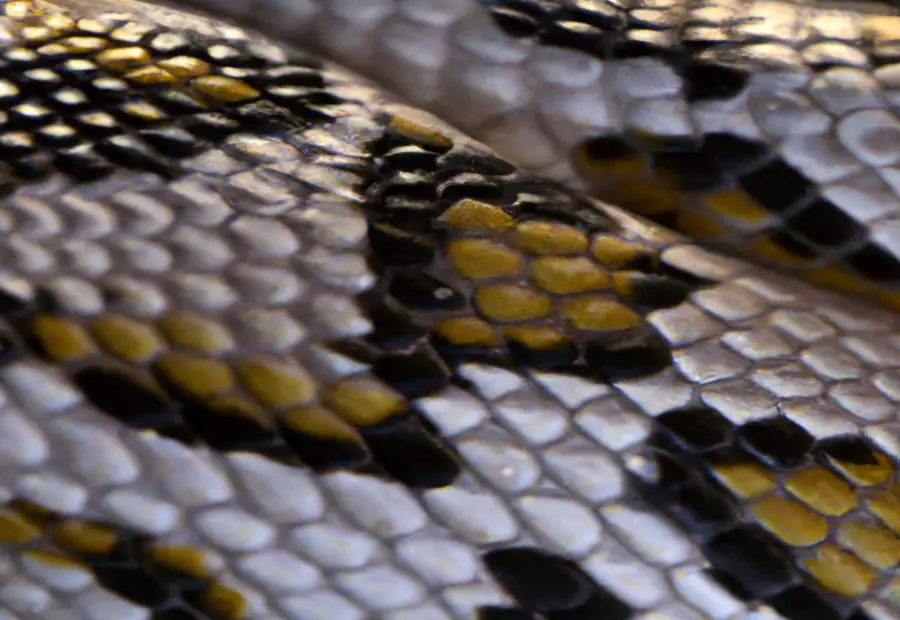
Photo Credits: Ruggedreptiles.Com by Michael Hernandez
Snakes shedding their skin may seem like a routine process, but it comes with its own set of challenges and dangers. In this section, we’ll dive into the problems that can arise during shedding. From stuck eye caps to incomplete sheds, we’ll explore the difficulties snakes face and the potential risks involved. So brace yourself as we unravel the intricacies of this natural phenomenon and shed light on the dangers that snakes encounter during their skin-shedding journey.
Problems That Can Arise During Shedding
During snake shedding, several problems can arise that may require attention or intervention. These problems, such as retained eye caps, incomplete shedding, stuck shed, dehydration, and injuries, can impair vision, lead to infections, constrict blood flow, cause discomfort, increase the risk of infections, and result in minor abrasions or more severe cuts or tears in the skin.
To address these problems, snake owners should closely monitor their snakes during shedding and promptly provide a humid environment, offer a shedding box, and carefully remove retained eye caps or stuck shed with the help of a reptile-safe shedding aid.
What to Do When a Snake is Shedding?
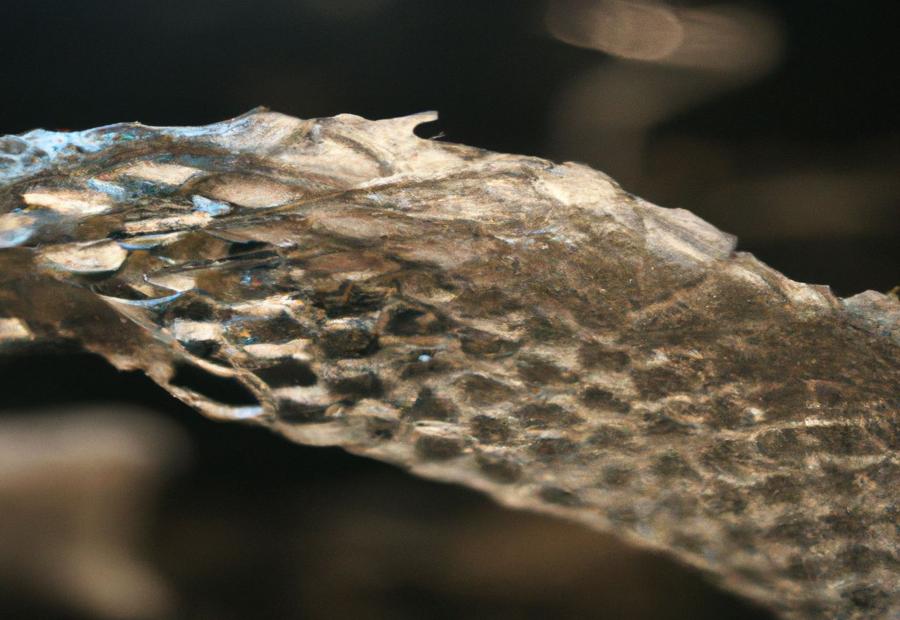
Photo Credits: Ruggedreptiles.Com by Raymond Walker
When a snake is shedding, it is important to know what to do. Follow these steps for a smooth shedding process:
-
Increase the humidity in the enclosure by misting the tank or placing a damp cloth inside. This will help the snake shed its skin easier.
-
Avoid handling the snake during this time to reduce stress and potential disruption. Snakes can become more sensitive and defensive when shedding.
-
Make sure the snake has access to fresh water for hydration during the shedding process. Hydration is essential for a successful shed.
-
Minimize disturbances in the snake’s environment to keep it stress-free. A calm and quiet environment will aid in the shedding process.
-
Provide a rough object in the enclosure for the snake to rub against and aid in removing old skin. This can be a branch or rock.
Remember, when a snake sheds its skin, it is a natural process to accommodate growth. As snakes grow, their skin becomes tight and they shed it in one piece, revealing a new, fresh layer underneath.
Shedding Light on How Often Snakes Shed Their Skin:
- ✅ Snakes shed their skin 3-6 times per year. (Source: A-Z Animals)
- ✅ Younger snakes shed their skin more frequently than adults. (Source: Reconnect with Nature)
- ✅ The shedding process includes a pre-shedding stage where the snake’s skin becomes dull and its eyes turn milky blue. (Source: Our Team)
- ✅ Snakes rub against objects like rocks or tree stumps to help remove their old skin. (Source: Our Team)
- ✅ Owners can help their pet snakes during shedding by providing access to water, objects to rub against, and a quiet and comfortable environment. (Source: Cascade Kennels)
Frequently Asked Questions
How often do snakes shed their skin?
Snakes shed their skin 3-6 times per year to accommodate their growth and get rid of parasites.
Do younger snakes shed their skin more frequently?
Yes, younger snakes shed their skin more often than adults because they are still growing.
What happens during the pre-shedding period?
During the pre-shedding stage, a snake’s skin becomes dull and its eyes turn milky blue.
How do snakes remove their old skin?
Snakes rub against objects like rocks or tree stumps to help remove their old skin.
Can snakes eat their old skin?
No, it is a misconception that snakes eat their old skin. They do not consume it.
How can owners help their pet snakes during shedding?
Owners can provide access to water, objects to rub against, and a quiet and comfortable environment to help their pet snakes during shedding.

